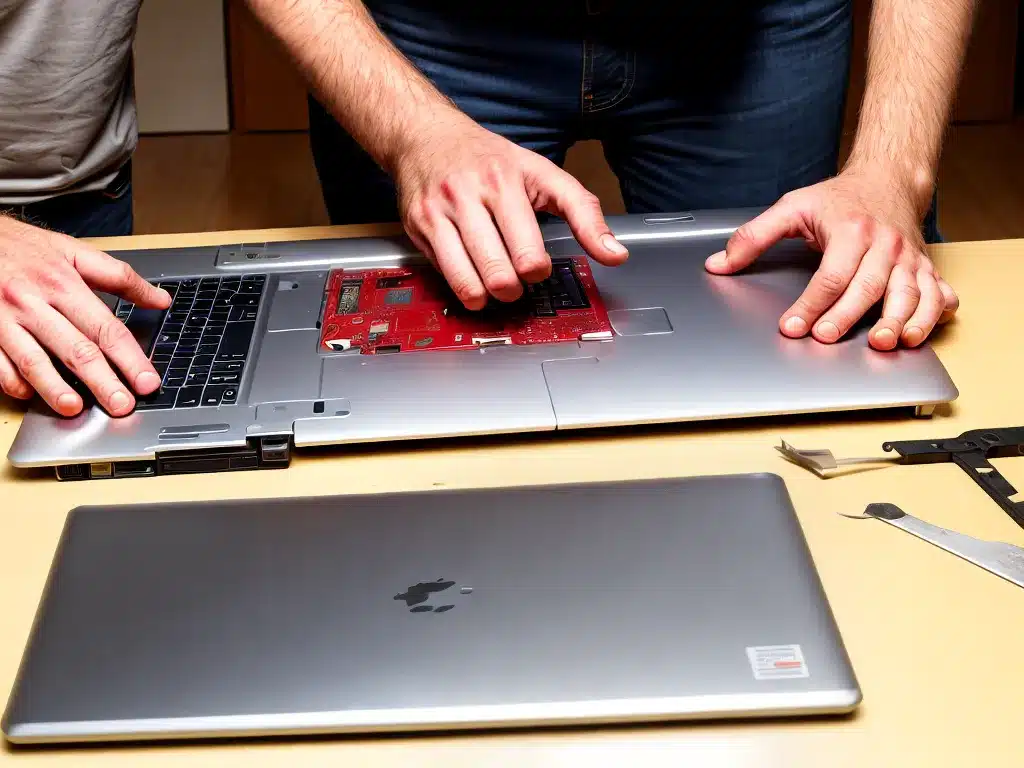
Introduction
Opening up a laptop to make repairs or upgrades can be daunting for beginners. However, with proper precautions and the right tools, the process can be straightforward. This guide will walk you through the steps for safely disassembling a laptop so you can complete DIY repairs.
Gather Tools and Prepare Workspace
Before beginning, make sure I have all the necessary tools and parts on hand. Here is what I will need:
- Phillips and flathead screwdrivers
- Plastic prying tools
- Tweezers
- Replacement parts (e.g. RAM, hard drive, battery)
- Clean, well-lit workspace with room to spread out
I should also take precautions against electrostatic discharge (ESD) by using an anti-static wrist strap. This will prevent me from damaging sensitive components like the motherboard when handling them.
Finally, I need to backup any important data and disconnect all cables attached to the laptop before proceeding.
Follow Proper Disassembly Steps
With the tools gathered and workspace prepped, I can now start carefully taking apart the laptop. Here is an overview of the key steps:
Remove Exterior Screws and Panels
- Use the correct screwdriver to remove any obvious screws on the bottom and sides of the laptop.
- Carefully pry off any removable panels starting from the edges using a plastic tool. This will expose more screws to remove.
Detach Internal Components
- Once inside, locate the battery connector and gently disconnect it.
- Remove any screws securing metal shields covering internal components. Lift these shields off.
- Identify the parts I need to replace like RAM, WiFi card, or hard drive and detach any screws or connectors to remove them.
Access the Motherboard
- Removing the keyboard requires special prying tools to prevent damage. Refer to a teardown guide for my specific laptop model if needed.
- With the keyboard removed, I can now access the motherboard underneath and replace any parts connected to it like the CPU or heat sink.
Reassemble in Reverse Order
- After completing the repairs, I can reassemble the laptop by reversing the disassembly steps.
- Take care to reconnect all connectors properly and replace all screws in their original locations.
Be Patient and Careful
The key to a successful DIY laptop repair is having patience and working carefully at every step. Rushing can easily lead to damaging connectors or losing track of which screws go where. I should set aside ample time for the first few times opening up a laptop to get comfortable with the process. With the right precautions, I can safely open, repair, and reassemble laptops to bring them back to life!
Conclusion
Opening a laptop for repairs takes the right tools, workspace, and techniques. Follow proper ESD prevention methods and refer to model-specific teardown guides. Take it slow, keeping track of all screws and connectors. With patience and care, I can successfully open up and reassemble a laptop to make virtually any repair or upgrade. The ability to safely disassemble and fix laptops is invaluable for any tech DIY enthusiast.












